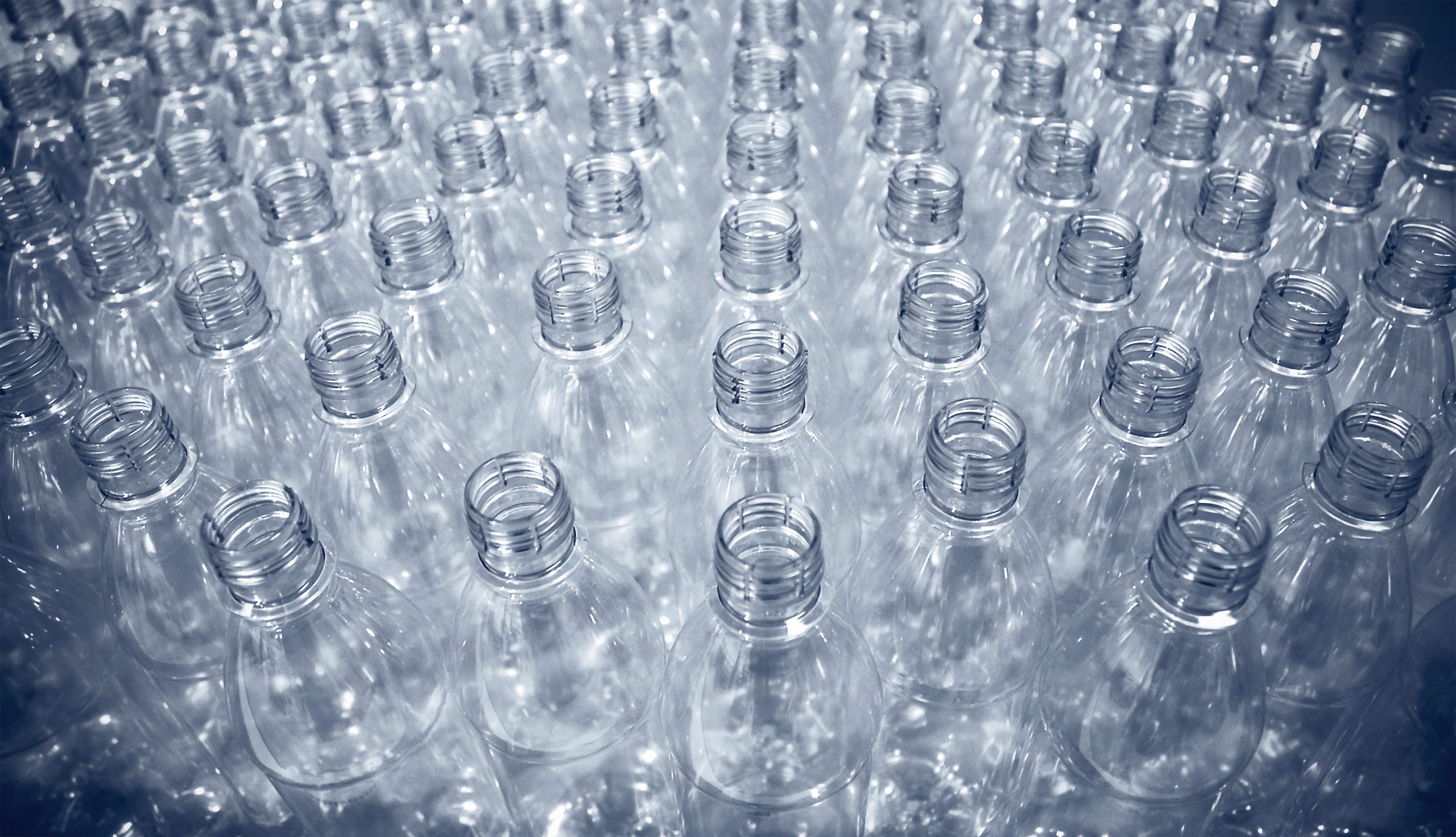“Plastic Wars,” which examines the crisis in plastic waste, airs on PBS nationwide on March 31, 2020, and online with additional stories online and on-air in the coming weeks. The program is co-produced by PBS FRONTLINE and NPR in collaboration with the Investigative Reporting Workshop.
Facing a growing public outcry over the plastic pollution crisis, some of the world’s biggest consumer brand companies have promised to dramatically boost recycling. Yet some of those same companies have made — and failed to deliver on — similar promises in the past.
“Companies make these big goals. Years roll by, nothing happens or they miss it,” says Conrad MacKerron, senior vice president of the shareholder activist group As You Sow, which has filed shareholder proposals to push companies to increase their recycling efforts. “And then there’s really no penalty in a lot of cases because people have moved on.”
A review of corporate commitments by FRONTLINE has found that three major brand companies and an association of plastic bag makers — all of which have recently pledged to increase the recycled content of their plastic packaging and bags — have fallen short of ambitious recycling-related goals in the past.
In a response to questions, none of the companies fully explained why they had failed to meet previous goals. But each one said they were deeply committed to their current goals of creating more sustainable and recycled plastic packaging.
The Coca-Cola Company
has twice before pledged to use more recycled plastic, but failed to sustain its goals both times.
- In the past: In 1990, Coke announced that it would start selling some of its soda in bottles made from about 25 percent recycled plastic, but quietly phased out the bottles in 1994. The company briefly met a second goal to use an average of 10 percent recycled content in 2005 before backsliding a year later.
- Today: The company now says it will make all of its bottles with an average of 50 percent recycled plastic by 2030. “It is important to note that the Company never abandoned support of recycling… at any point in the journey,” it said in a statement. It said its efforts have “evolved over time,” and that it has made “progress” already toward its new goals. “[W]e have a lead responsibility to make packaging waste a thing of the past,” but said it “can’t achieve this alone. ” It added that the company encourages the public “to challenge us and keep us honest.
PepsiCo,
a food and drink conglomerate that includes Frito-Lay and Quaker Foods in addition to its beverage brands, has twice been unable to follow through on recycling-related goals.
- In the past: In 1990, Pepsi introduced a bottle made from 25 percent recycled content, but by the end of the decade, the company had no recycled plastic in its bottles. It did meet a more modest goal to include 10 percent recycled content in its bottles in 2005. But the company failed to deliver on a third pledge to increase the industry-wide container recycling rate to 50 percent by 2018.
- Today: PepsiCo now says it will use 25 percent recycled content in its plastic packaging, and 33 percent in clear plastic bottles, by 2025. In a statement, the company said: “PepsiCo was one of the first major corporations to make sustainability a core part of our business[;] we continue to build upon and accelerate those efforts.” The company added that there was a need for “improved recycling infrastructure and regulatory reform” to meet its goals. But the company said it aims to “leverage our scale and reach to accelerate systemic change.”
Nestlé Waters North America,
a subsidiary of the Swiss giant that houses brands like Perrier, Arrowhead and Poland Spring, is focused on its own packaging after falling short of a goal to increase plastic recycling nationwide.
- In the past: In 2008, the company set a goal to double the U.S. recycling rate for PET, the clear plastic used for water and soda bottles, to 60 percent in a decade. Yet by 2018, the PET recycling rate was virtually unchanged at 29 percent.
- Today: Now the company aims to have 25 percent recycled content in its bottles by 2021 and 50 percent by 2025. Nestlé Waters North America acknowledged in a statement that its goals have shifted to focus on increasing recycled content in its products, rather than overall plastic recycling rates. “Our resolve to lead the industry in the use of recycled plastic in our packaging has never been stronger,” the company said, adding that it already sells some of its water in 100 percent recycled plastic bottles, including in its Poland Spring brand.
The American Recyclable Plastic Bag Alliance,
the main trade group representing U.S. plastic bag manufacturers, set more modest recycled content goals this year after missing its previous target.
- Before: The group, known at the time as the Progressive Bag Affiliates, announced in 2009 what it called an “aggressive” goal to use recycled plastic in 40 percent of the bags its members’ made by 2015. The group fell far short of that goal, explaining in a statement that the wave of bag bans that followed its 2009 announcement made it harder for its members to meet its goals, and that the drop in price of new plastic made bags made with recycled plastic a “tougher sale in the marketplace.”
- Today: In January 2020, the group set less ambitious targets: 10 percent recycled plastic in bags by 2021 and 20 percent by 2025. The alliance “has identified a reasonable and attainable goal that our industry can meet and hopefully exceed,” said Matt Seaholm, the executive director, in a statement. He added the group’s members were committed to their goal but that “it needs to be economical.” He said, “That includes sufficient end markets, but it also requires manufacturers and consumers to step up and use recycled content even when it isn’t mandated.”





